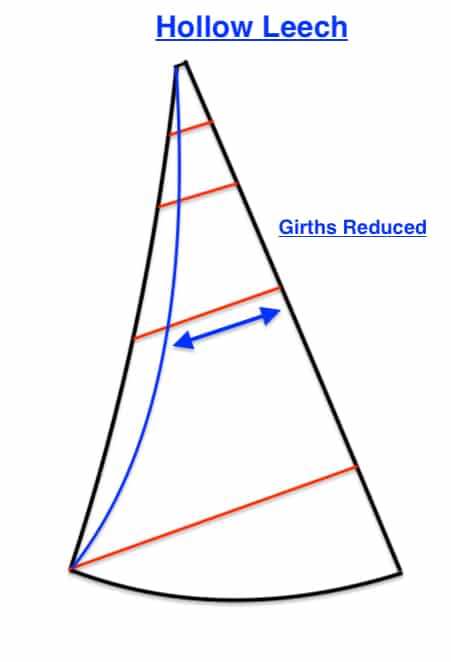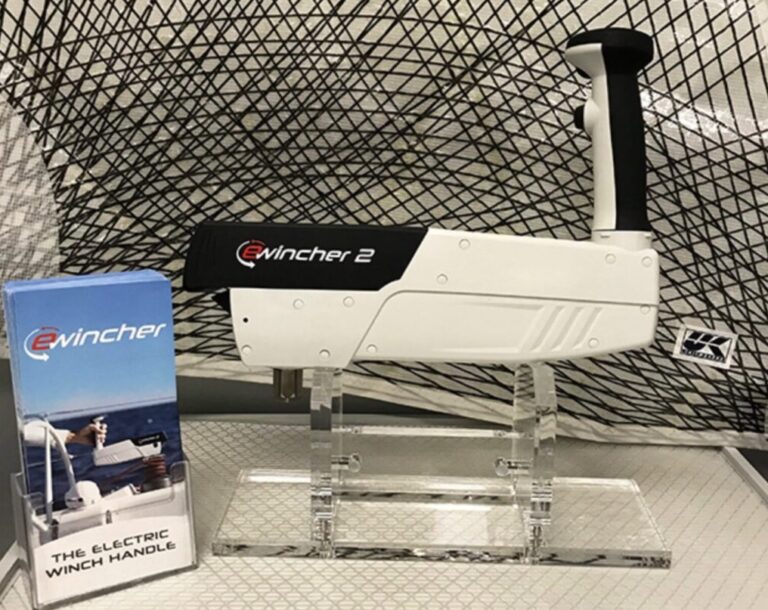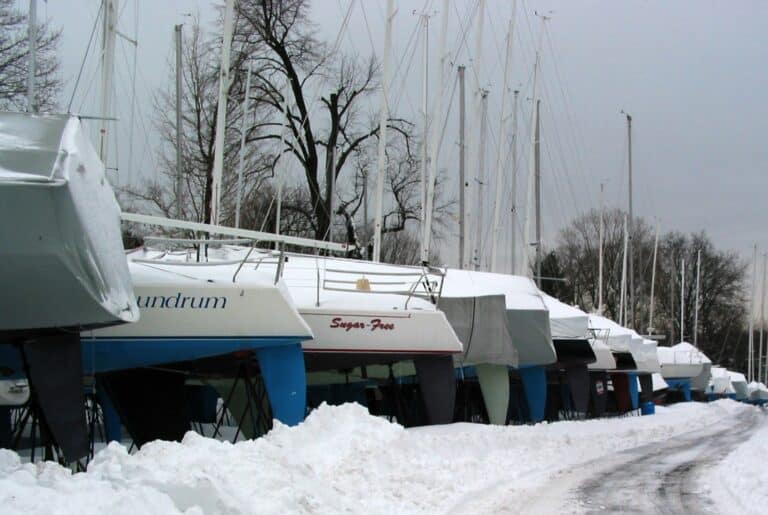When it comes to reducing the area of your headsail (HSA) as a way to improve your IRC rating, Barry Hayes from UK Sailmakers Ireland has the low down. You’ll learn how the process is both complicated and. Here’s what Barry shared:
I know everyone wants the lowest rating possible for their boat and I often get asked if shortening headsail luff a little can I bring down their rating. Basically, the answer is yes; almost any reduction in sail area, if done in the right places, will lower a boat’s rating. However, there is a fine line between the net gain of a lower rating vs losing power. This can be tricky business; let me explain.
Most owners want to optimize their boat’s rating to suit the conditions they most regularly sail. Consider this example: a boat is fully powered up at nine knots and at its optimum healing angle, given the conditions and the amount of crew they have. If the owner still feels the boat has too much power despite being already maxed out on the backstay, by reducing the righting moment in the sails, then eliminating that unnecessary power may make the boat perform better and hopefully result in a lower rating. Reducing headsail area is a viable option, but be careful this reduction in ( HSA )won’t change where the lead is set on the boat when sailing.
There are three main ways to reduce your HAS (Head Sail Area): 1) reducing the luff length, 2) reducing the LP, and. 3) hollowing the leech. Each has its pros and cons.


1) Making the luff shorter. This has a significant effect on reducing your rating, but actually may increase your HSA. That may sound counter-intuitive, but if the luff is shorter, all the girth measurement points move further down the sail, so you may lose real headsail area, but it will increase your IRC HSA. In this example below, you can see how reducing the luff length will move the girths down the sail and the sail, but it will be larger in area when measured in IRC.
2) Reducing the LP. This will bring your rating down, but it will also greatly affect the shape of the sail as you are cutting/changing the leading-edge camber. This rarely works well as it totally changes the sail’s shape and aerodynamic design.


3) Hollowing the leech of the sail. This will reduce the area in terms of IRC measurements. While this process will take actual area out of the sail, usually it’s only a small amount, normally about a square meter or so, depending on the size of the sail. For most boats, that is all you need for IRC, and it won’t affect the sail shape. It’s also normally the cheapest options as well, given the amount of work needed in the other two options.

Here is table showing the change in measurements of a recut genoa.

Historically, when your sail is new, it will shrink a little, but today this effect is greatly reduced with new sail technology. The amount of shrinkage is tiny, but it is worth getting your sail re-measured for IRC a year after first use.
An even better option than the three I reviewed is to get a new headsail designed to the specific HSA you desire. I’m not saying that so much as a sailmaker, but a new sail that is designed and built to a desired size will deliver better performance than an older sail that has been recut. Locally, the Formula 28 ANIMAL wanted to sail with less crew. The owner reduced his HSA and increased his SPA; this way he reduced unneeded power he had upwind, and optimized his rating downwind.
In contrast, if you need more power because your headsail area is too small and you don’t want a new headsail, try sailing with less crew as a means to balance the boat to the optimum power and weight ratio for the conditions at which you have your rating set.
Let me close by answering your email question before you ask it; the effect of the recut on your headsail changes I’ve discussed here will be the same on non-overlapping headsails.
If you’re thinking about optimizing your boat for the coming season, give us a call, and we can help you get the best out of your rating.






